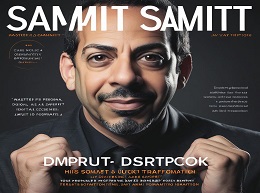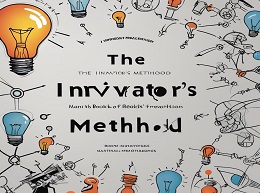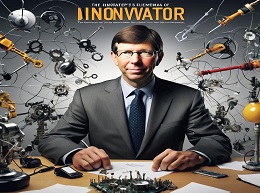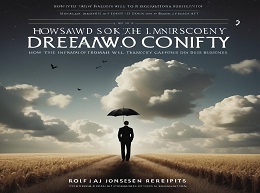The Ten Faces of Innovation: IDEO's Strategies for Beating the Devil Advocate and Driving Creative

"The Ten Faces of Innovation": Unleashing Creativity in Organizations
In "The Ten Faces of Innovation: IDEO's Strategies for Beating the Devil's Advocate and Driving Creativity Throughout Your Organization," Tom Kelley, a partner at the renowned design firm IDEO, offers a compelling guide to fostering innovation within organizations. Drawing on IDEO’s extensive experience, Kelley introduces ten personas that can help overcome the stifling influence of the Devil's Advocate and ignite creativity. This detailed review explores the core concepts of the book, enriched with real-world examples and practical insights to engage and inspire readers.
Tom Kelley
Tom Kelley is a partner at IDEO, one of the world’s leading design and innovation firms, and a celebrated author and speaker on innovation and design thinking. His work at IDEO has contributed to groundbreaking innovations across various industries. Kelley's expertise in fostering creativity and his deep understanding of organizational dynamics provide a solid foundation for the insights shared in "The Ten Faces of Innovation."
Understanding the Devil's Advocate
The book begins by addressing the concept of the Devil's Advocate, a role often assumed to challenge ideas and identify potential flaws. While this approach can be valuable, Kelley argues that it frequently stifles creativity and innovation by fostering a culture of negativity and fear of failure.
Example: Kodak’s Downfall
Kodak’s resistance to digital photography is a classic example of the Devil's Advocate at work. Internal skepticism and a focus on protecting their existing film business prevented Kodak from embracing digital technology early on. This reluctance ultimately led to their decline in the face of digital innovation.
The Ten Innovation Personas
To counter the Devil's Advocate, Kelley introduces ten personas that embody different aspects of innovation. These personas can help organizations cultivate a culture of creativity and drive continuous improvement. Each persona represents a unique perspective and set of behaviors that contribute to the innovation process.
1. The Anthropologist
The Anthropologist brings deep insights by observing how people interact with products and services in their natural environments. This persona helps uncover unmet needs and pain points that can lead to innovative solutions.
Example: Procter & Gamble’s Swiffer
Procter & Gamble (P&G) used anthropological research to develop the Swiffer. By observing how people cleaned their homes, P&G identified the need for a more convenient cleaning solution, leading to the creation of the highly successful Swiffer line of products.
2. The Experimenter
The Experimenter embraces a hands-on approach, rapidly prototyping and iterating to refine ideas. This persona encourages a culture of experimentation and learning from failures.
Example: Dyson’s Vacuum Cleaners
James Dyson exemplifies the Experimenter persona. He created over 5,000 prototypes before perfecting his bagless vacuum cleaner. This relentless experimentation led to a revolutionary product and the foundation of a successful company.
3. The Cross-Pollinator
The Cross-Pollinator combines ideas from different disciplines and industries to generate innovative concepts. This persona values diversity and cross-functional collaboration.
Example: Apple’s iPhone
The development of the iPhone involved cross-pollination of ideas from telecommunications, computing, and design. This integration of diverse expertise resulted in a groundbreaking product that revolutionized the smartphone industry.
4. The Hurdler
The Hurdler thrives on overcoming challenges and finding creative solutions to obstacles. This persona is resilient and resourceful, turning setbacks into opportunities.
Example: SpaceX’s Reusable Rockets
Elon Musk’s SpaceX exemplifies the Hurdler persona. Despite numerous failures and setbacks, SpaceX persisted in developing reusable rockets, ultimately achieving significant cost savings and advancing space exploration.
5. The Collaborator
The Collaborator fosters teamwork and collaboration, bringing people together to achieve common goals. This persona emphasizes the power of collective intelligence and co-creation.
Example: Google’s Project Aristotle
Google’s Project Aristotle identified that successful teams are characterized by psychological safety, dependability, structure, clarity, meaning, and impact. By focusing on these attributes, Google enhanced team collaboration and innovation.
6. The Director
The Director provides vision, direction, and support, ensuring that the team stays focused and motivated. This persona inspires and empowers others to achieve their best work.
Example: Steve Jobs at Apple
Steve Jobs’ visionary leadership at Apple epitomizes the Director persona. His ability to articulate a clear vision and inspire his team led to the creation of iconic products like the iPod, iPhone, and iPad.
7. The Experience Architect
The Experience Architect designs compelling customer experiences that go beyond functionality. This persona focuses on creating emotional connections and memorable interactions.
Example: Disney Theme Parks
Disney theme parks are a prime example of the Experience Architect persona. Every aspect of the park, from attractions to customer service, is meticulously designed to create a magical and memorable experience for visitors.
8. The Set Designer
The Set Designer shapes physical and virtual environments that foster creativity and collaboration. This persona understands the importance of space in influencing behavior and productivity.
Example: Pixar’s Office Layout
Pixar’s office layout encourages spontaneous interactions and collaboration among employees. The open and creative workspace design helps foster an innovative culture where ideas can flourish.
9. The Caregiver
The Caregiver deeply understands and empathizes with customers, ensuring that their needs and desires are met. This persona creates products and services that truly resonate with users.
Example: Mayo Clinic’s Patient-Centered Care
The Mayo Clinic exemplifies the Caregiver persona with its patient-centered approach to healthcare. By prioritizing the needs and experiences of patients, the clinic has earned a reputation for exceptional care and innovation in healthcare services.
10. The Storyteller
The Storyteller crafts and shares compelling narratives that convey the vision, values, and purpose of the organization. This persona helps build emotional connections and inspire action.
Example: Nike’s Brand Storytelling
Nike’s powerful storytelling, exemplified by campaigns like "Just Do It," resonates deeply with consumers. By sharing stories of athletes and the pursuit of excellence, Nike has built a strong, inspirational brand identity.
Implementing the Personas
Kelley provides practical advice on how organizations can adopt and integrate these personas to drive innovation. He suggests starting with small, manageable changes and gradually embedding these personas into the organizational culture.
Example: IDEO’s Own Practices
At IDEO, these personas are not just theoretical concepts but are actively practiced. IDEO encourages employees to adopt different personas based on the needs of the project, fostering a dynamic and versatile approach to problem-solving.
"The Ten Faces of Innovation" by Tom Kelley is an essential read for anyone looking to drive creativity and innovation within their organization. By introducing ten distinct personas, Kelley offers a multifaceted approach to overcoming the stifling influence of the Devil's Advocate and unlocking the full potential of a team’s creative capabilities.
Through engaging examples and actionable insights, Kelley demonstrates how these personas can be implemented to foster a culture of innovation. Whether you are an entrepreneur, executive, or team leader, adopting the principles outlined in this book can help you navigate the complexities of innovation and lead your organization to new heights of success.
In a world where innovation is key to competitive advantage, "The Ten Faces of Innovation" provides a valuable framework for understanding and harnessing the diverse facets of creativity. By embracing these personas, organizations can not only survive but thrive in the ever-changing business landscape, turning challenges into opportunities and driving continuous growth and improvement.













